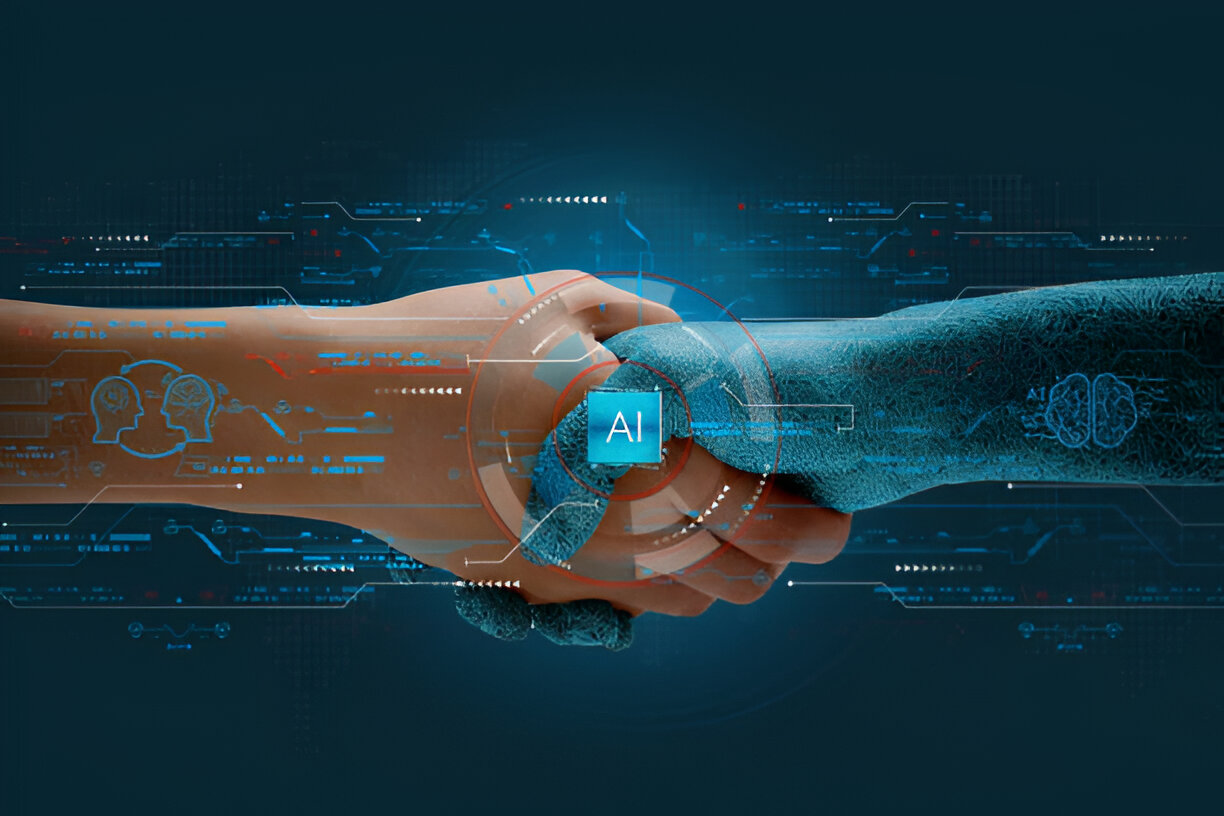Ever feel overwhelmed by mountains of data but starved for real answers? You’re not alone. Businesses struggle to turn raw numbers into actionable insights without drowning in complexity. That’s where AI in BI steps in — transforming traditional dashboards into smarter, predictive tools that reveal auto-insights and streamline forecasting dashboards. Stick with me, and you’ll learn how AI-powered BI can unlock next-level decision-making and save you valuable time.
Unlocking the Power of Auto-Insights in AI-Driven BI
Auto-insights are essentially automated, AI-generated revelations that highlight key business trends, anomalous behavior, or critical drivers without manual data deep-dives. Within the context of AI in BI, auto-insights redefine how companies discover the meaningful signals buried beneath vast amounts of data.
Traditional BI systems require analysts to establish queries, filters, and views to unearth trends. This approach is labor-intensive and often misses subtle or unexpected patterns. AI-powered BI platforms leverage advanced algorithms—such as machine learning and anomaly detection—to sift through data autonomously. They identify what’s relevant, like sudden drops in customer retention or emerging shifts in purchasing behavior, delivering those insights directly to decision-makers.
For example, retail businesses use AI auto-insights to automatically spot when certain products show unexpected spikes or slumps in sales, helping guide inventory management. Similarly, AI analyzes operational datasets for unusual activity—like production bottlenecks or quality issues—alerting managers before problems escalate. A financial services firm might detect subtle changes in client engagement metrics without manual intervention, allowing for timely adjustments.
Key benefits of auto-insights through AI in BI include:
- Reduction in noise: AI filters out irrelevant data points, focusing attention on what truly impacts business outcomes.
- Instant discovery: Where human teams may take days or weeks to surface insights, AI delivers them continuously in real time.
- Accessibility: Teams without deep analytics expertise receive actionable intelligence directly, empowering broader data-driven decisions.
To maximize these benefits, businesses should implement AI models tailored to their context and combine auto-insights with intuitive BI dashboards that emphasize clarity and relevance. Auto-insights transform raw data into meaningful narratives that propel smarter strategy and operations.
Enhancing Forecasting Dashboards with AI
Forecasting dashboards are BI tools designed to anticipate future trends using historical and current data. Integrating AI dramatically elevates their value by injecting predictive intelligence and adaptability that traditional forecasting cannot match.
At a basic level, conventional dashboards display static reports or simple trend extrapolations, often requiring manual updating and expert interpretation. In contrast, AI-infused forecasting dashboards employ cutting-edge machine learning techniques and time series models that learn from past patterns while continuously adapting to fresh data inputs.
Here’s how AI revolutionizes forecasting dashboards within BI platforms:
- Improved predictive accuracy: Machine learning (ML) algorithms can handle nonlinearities, seasonal effects, and irregularities better than classical models, delivering more reliable forecasts.
- Dynamic updates: AI models can recalibrate predictions in real time as new data arrives, allowing businesses to react promptly to market fluctuations or operational changes.
- Scenario analysis: Advanced AI-driven dashboards enable users to simulate “what-if” scenarios, such as supply chain disruptions or changes in consumer behavior, supporting proactive planning.
- Automation: Routine forecasting tasks become automated, freeing analysts to focus on interpretation and strategy rather than data wrangling.
For instance, a manufacturing company might use AI-powered forecasting dashboards to predict equipment maintenance needs, reducing downtime. E-commerce firms forecast customer demand with greater precision, optimizing inventory and marketing spend.
Businesses adopting AI in forecasting dashboards gain a significant edge by:
- Delivering forecasts that are not only more accurate but also context-aware and nuanced.
- Automatically alerting stakeholders when unusual trends or risks are detected.
- Reducing manual effort while enhancing decision speed and confidence.
Actionable tip: When implementing AI forecasting dashboards, ensure your data streams are timely and consistent. Pair AI predictions with clear visualizations that highlight confidence intervals and key assumptions to maintain interpretability.
Integrating AI in BI: Tools and Best Practices
Effectively combining AI with BI platforms requires thoughtful strategy, focusing on technology, data quality, and culture. Here’s how businesses can successfully integrate AI into existing BI ecosystems while fostering user adoption.
Popular AI Tools and BI Software Integrations
Leading BI solutions now offer native AI capabilities or seamless integrations with AI platforms:
- Microsoft Power BI with Azure AI Services: Embeds automated machine learning and cognitive services for enhanced analytics.
- Tableau augmented with Einstein Analytics (Salesforce): Brings AI-driven predictions and natural language queries within dashboards.
- Qlik Sense with AI-infused Insight Advisor: Generates auto-insights and supports conversational analytics.
- Google Looker tied to Vertex AI: Enables end-to-end AI data workflows within BI visualizations.
Selecting tools that align with your existing infrastructure and user skillsets facilitates smoother implementation.
Data Preparation and Quality Considerations for AI Success
AI’s effectiveness hinges on robust data management. Best practices include:
- Ensuring data cleanliness: Remove duplicates, fill missing values, and standardize formats.
- Aggregating diverse data sources: Combine CRM, ERP, social media, and IoT data to enrich models.
- Maintaining data governance: Define roles, access controls, and auditing to keep data trustworthy and compliant.
- Implementing real-time data pipelines: Streamline data ingestion for fresh insights and forecasting accuracy.
Neglecting data quality risks poor predictions and erodes trust in AI-powered BI outputs.
Tips for Training Teams and Encouraging Data-Driven Culture
Technology adoption falters without confident users and organizational buy-in. Foster a data-driven culture by:
- Providing hands-on training: Conduct workshops to demonstrate AI features in dashboards and how to interpret auto-insights.
- Encouraging collaboration: Cross-departmental teams should work together to refine data models and validate AI outputs.
- Promoting transparency: Explain AI processes and limitations to build user trust.
- Empowering decision-makers: Tailor dashboard views with role-specific insights to ensure relevance.
These practices help transform AI in BI from a technical project into an enterprise capability.
Future Trends: The Next Frontier for AI in Business Intelligence
The evolution of AI in BI is accelerating, promising new capabilities businesses must watch to stay competitive.
Real-Time Data Processing and NLP-Powered Insights
Next-gen AI-driven BI systems integrate real-time streaming data — from sensors, social channels, or transactions — enabling instant auto-insights and adaptive forecasting. Natural Language Processing (NLP) allows users to query dashboards with conversational language, dramatically lowering barriers to insight discovery.
Imagine executives asking, “What caused last quarter’s revenue dip?” and receiving immediate, context-rich explanations from the dashboard. This blend of speed and accessibility transforms decision-making workflows.
Explainable AI for Transparency and Trust in Auto-Insights
As AI models grow complex, explainability becomes critical. Explainable AI (XAI) techniques demystify how auto-insights and predictions are generated, outlining feature importance and model confidence. This transparency boosts stakeholder trust and supports compliance with emerging AI regulations.
Augmented Analytics and Proactive Decision Support
Augmented analytics combines AI’s computational power with human intuition, guiding users toward relevant analyses and recommendations. Future BI dashboards will anticipate user needs—proactively suggesting strategies, risk mitigations, or opportunity captures before being asked.
For example, an augmented analytics system might warn a retailer about an oncoming supply chain disruption detected through multi-modal data, offering alternative sourcing options via the dashboard.
Businesses incorporating these advanced AI capabilities gain unparalleled agility and insight richness, solidifying BI as a strategic asset.
Conclusion
AI in BI is no longer a luxury – it’s an essential evolution for businesses aiming to navigate complexity with clarity. By harnessing AI-driven auto-insights and advanced forecasting dashboards, companies can make smarter decisions faster than ever.
The integration of AI automates and enhances insight discovery, turning raw data into real business value. Future-forward companies that adopt AI-infused BI platforms will unlock adaptive, transparent, and proactive tools essential for sustained success.
For those ready to embrace the future of BI, WildnetEdge stands out as a trusted partner offering cutting-edge AI integrations tailored to your business needs. Explore how WildnetEdge can empower your BI strategy today, unlocking new dimensions of data-driven decision-making.
FAQs
Q1: What is AI in BI and how does it improve auto-insights?
AI in BI refers to the use of artificial intelligence technologies to analyze business data automatically. It improves auto-insights by identifying important trends and anomalies without manual effort, helping businesses focus on actionable information.
Q2: How do AI-powered forecasting dashboards differ from traditional dashboards?
AI-powered forecasting dashboards use machine learning models to predict future outcomes dynamically and adjust predictions based on new data, while traditional dashboards mainly provide static or historical data views.
Q3: What are the best practices for integrating AI into existing BI tools?
Best practices include ensuring high-quality data, choosing compatible AI tools, training users on new capabilities, and gradually scaling AI features to align with business goals.
Q4: Can small businesses benefit from AI in BI and how?
Yes. Small businesses can leverage AI in BI to automate insight discovery, forecast demand more accurately, and make data-driven decisions without requiring large analytics teams.
Q5: What future trends in AI should BI professionals watch for?
BI professionals should watch for real-time analytics, explainable AI to build trust in automated insights, and augmented analytics that combine human intuition with AI efficiency.

Nitin Agarwal is a veteran in custom software development. He is fascinated by how software can turn ideas into real-world solutions. With extensive experience designing scalable and efficient systems, he focuses on creating software that delivers tangible results. Nitin enjoys exploring emerging technologies, taking on challenging projects, and mentoring teams to bring ideas to life. He believes that good software is not just about code; it’s about understanding problems and creating value for users. For him, great software combines thoughtful design, clever engineering, and a clear understanding of the problems it’s meant to solve.
 sales@wildnetedge.com
sales@wildnetedge.com +1 (212) 901 8616
+1 (212) 901 8616 +1 (437) 225-7733
+1 (437) 225-7733































